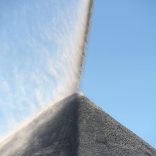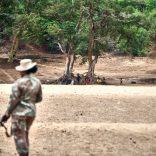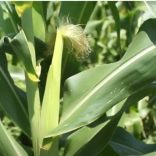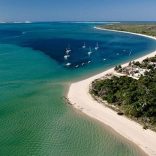Tanzania confirms outbreak of Marburg virus
‘New dinosaur’ hiding in plain sight in South Africa

Picture: Jonah Choiniere, NHMdinolab and ESI
The misidentified fossils of an early dinosaur have been ‘hiding in plain sight’ in South Africa for over three decades, according to an announcement in the journal PeerJ.
Professor Paul Barrett, a dinosaur researcher at the Natural History Museum in London, is part of a team that has reassessed a specimen found 30 years ago and held at the University of Witwatersrand in Johannesburg.
According to information from the Natural History Museum, the creature named Ngwevu intloko has been redescribed as an entirely new species and is helping to build a more complex picture of what the world was like at the beginning of the Jurassic, when dinosaurs began to dominate.
“This is a new dinosaur that has been hiding in plain sight. The specimen has been in the collections in Johannesburg for about 30 years, and lots of other scientists have already looked at it. But they all thought that it was simply an odd example of Massospondylus,” said Barrett.
Thrilled to announce a new #dinosaur, which we can welcome today: the early sauropodomorph Ngwevu intloko from South Africa, in a paper led my Kimi Chapelle and @ESI_FossilLab @jonahchoiniere with help from @NationalMuseumB and me #NHMdino https://t.co/YCdNWkWT8v pic.twitter.com/wcrvRw4U6L
— NHMdinolab (@NHMdinolab) August 5, 2019
At the dawn of the Jurassic, having just weathered their first major extinction event, a relatively new group of animals – the dinosaurs – finally had their chance to reign.
One of the first species to seize upon this opportunity was Massospondylus. Known from hundreds of specimens collected throughout southern Africa, the creature belonged to a group called the sauropodomorphs. These would eventually give rise to the sauropods, which include Diplodocus, along with some of the largest animals ever to have lived.
It was long thought that Massospondylus was a disaster taxon, a species that rapidly became common after mass extinction events and took advantage of the empty landscape. But researchers have been looking closer at many of these supposed Massospondylus specimens, and things may not have been so straightforward.
Along with Barrett’s colleagues in South Africa, and led by Barrett’s PhD student Kimberley Chapelle, they recognised it not only as a new species of sauropodomorph but an entirely new genus, which has now been named Ngwevu intloko.
A new look at old specimen
The Natural History Museum explains that the new dinosaur is known from a single fairly complete specimen whose skull and much of its skeleton are remarkably well preserved.
“N. intloko was bipedal and had a fairly chunky body, with a long slender neck and a small, boxy head. It would have been a relatively small dinosaur, measuring perhaps three metres from the tip of its snout to the end of its tail.
“While it likely ate some plants, it may also have taken any small animals that were unable to escape its path. It would have been quite different from the large, plant-munching sauropods that came much later in the Jurassic.
“Other researchers have looked at the specimen and largely ignored it. Some thought that perhaps it might have been a young Massospondylus and that maybe some of the differences in the specimen were a result of growth patterns,” said Barrett.
“But the most common explanation was that the skull had been deformed in some way during fossilisation and that was why it looked so different.”

Chapelle, Barrett and their colleagues compared the specimen with those from definitive Massospondylus fossils that ranged from tiny animals with skulls measuring 10 centimetres to fully grown adults with skulls about 30 centimetres long. Chapelle applied CT scanning to each specimen to get as much detail as possible.
“Studying how dinosaurs grew is a very important step in better understanding why some dinosaurs look different,” explained Chapelle. “This is a difficult task to accomplish with fossils because it is rare to have a complete age series of fossils from a single species. Luckily, the most common South African dinosaur Massospondylus has specimens ranging from embryo to adult.”
None of the changes in growth patterns in these Massospondylus specimens reflected the differences observed in N. intloko. This meant that they were able to rule out the fact that the differences may have been down to age.
“The final clincher was that the skull is clearly not deformed. It’s not obviously been twisted in any particular way and you can’t see any breaks in the skull to suggest it had been broken. So we could rule that out as well,” said Barrett.
The team also considered whether sexual dimorphism might explain the differences in size and proportions. But while the size and structure of horns and antlers may vary between males and females in mammals, the general proportions of their skulls do not. This means that sexual differences are also unlikely to explain things.
“All of these aspects combine to mean that we can be confident that this is genuinely something new,” explained Barrett.
“This new species is interesting because previously we thought that there was really only one type of sauropodomorph living in South Africa at this time.
“Recent work has now shown that there were actually lots of different types of dinosaurs back then. While we used to think that there was maybe one type of dinosaur, we now know there were actually six or seven sauropodomorph dinosaurs in this area, as well as variety of dinosaurs from other, less common groups.
“Some of these other sauropodomorphs were very much like Massospondylus, but a few were incredibly close to the origins of true sauropods, if not true sauropods themselves.”
The findings help to shed some light on what the environment was like at the transition between the Triassic and Jurassic periods, around 200 million years ago.













Leave a Reply
Be the First to Comment!
You must be logged in to post a comment.
You must be logged in to post a comment.